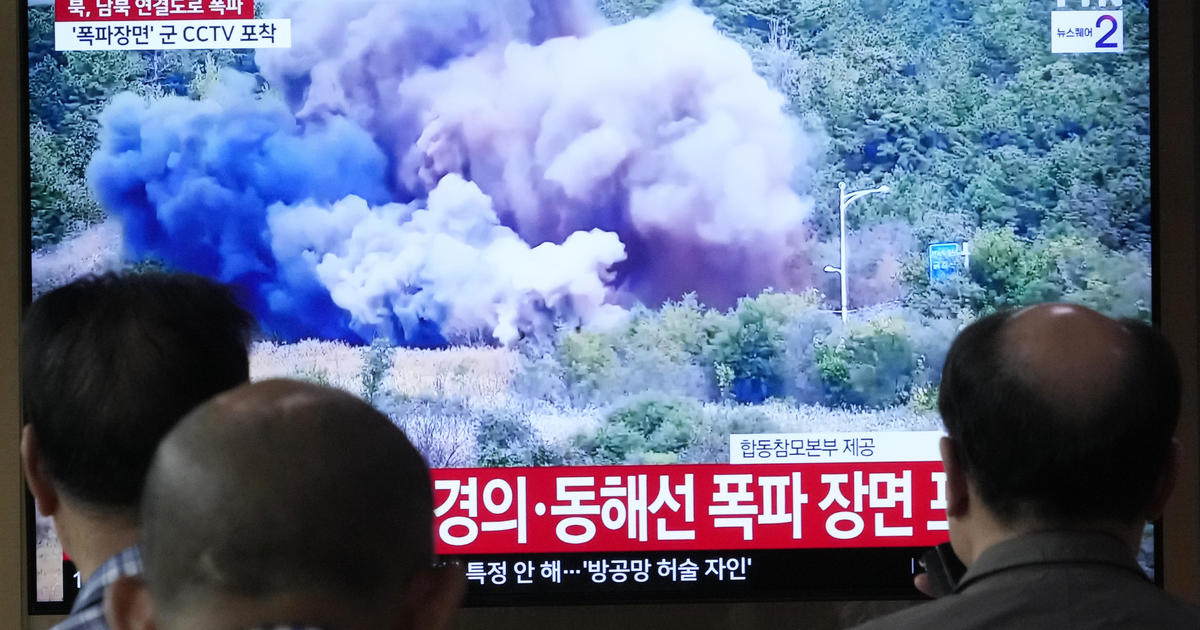The escalating tensions between North and South Korea reached a new peak with North Korea’s symbolic destruction of inter-Korean roads. This act, following accusations of South Korean drone incursions over Pyongyang, represents a significant deterioration in relations and signals a hardening of North Korea’s stance under Kim Jong Un’s leadership. The demolition serves not only as a response to the alleged drone flights but also as a broader expression of North Korea’s rejection of the possibility of peaceful reunification and its deepening hostility towards the South Korean government. The international community watches with concern as the peninsula once again teeters on the brink of conflict.
North Korea’s Demolished Roads: A Symbol of Escalating Tensions
The Destruction and its Implications
On Tuesday, North Korea carried out the demolition of the northern sections of several inter-Korean roads. This act was met with condemnation from South Korea’s Unification Ministry, which described it as “highly abnormal” and a violation of past agreements. The demolition was not merely a physical act; it served as a potent symbolic gesture reflecting the sharply deteriorating relationship between the two countries. The destruction, captured on video showing plumes of smoke rising from the sites near Kaesong and the eastern border, signifies North Korea’s intent to further isolate itself from the South. This action aligns with Kim Jong Un’s earlier pronouncements declaring South Korea the North’s “invariable principal enemy” and abandoning the pursuit of peaceful reunification. Experts interpret this not only as a direct response to perceived provocations but as a broader strategic move to consolidate Kim’s authority and redefine North Korea’s geopolitical standing.
Historical Context of Destruction
The demolition of the inter-Korean roads is not an unprecedented event. North Korea has a history of using the destruction of infrastructure as a means of political messaging. Similar actions include the 2020 destruction of the inter-Korean liaison office and the demolition of tunnels at its nuclear testing site in 2018. These events serve to underscore North Korea’s willingness to resort to dramatic gestures to express displeasure and exert influence in the regional geopolitical landscape. By destroying these previously collaborative structures, North Korea aims to underscore its rejection of cooperation and engagement with the South. This tactic helps solidify its narrative of external threat and justifies the regime’s domestic policies. The current actions are therefore seen within this wider pattern of using symbolic destruction as a tool of political coercion and self-assertion.
The Alleged South Korean Drone Incursions and North Korea’s Response
The Accusations and North Korea’s Reaction
The alleged infiltration of South Korean drones over Pyongyang serves as the immediate trigger for the demolition of the roads. North Korea accuses South Korea of violating its airspace on multiple occasions this month and has presented “clear proof” supporting its allegations. The South Korean government, while not confirming the drone deployments, has cautioned North Korea against actions that threaten its citizens’ safety. North Korea’s reaction has been swift and severe, showcasing the high sensitivity surrounding any perceived intrusion into its territory. The official statements, characterized by inflammatory language and threats of retaliation, underline the rising level of tension on the peninsula and underscore the limited channels for de-escalation.
Military Posturing and Heightened Tensions
In response to the alleged drone incursions, North Korea placed its frontline artillery units and other military assets on high alert. The North Korean Defense Ministry issued stark warnings of devastating consequences for South Korea should such actions be repeated. These heightened military activities reinforce concerns of potential further escalations in the near term. Such bellicose rhetoric is coupled with concrete actions of fortification along the border—laying more mines and constructing further barriers to reinforce North Korea’s commitment to a more hardened military posture towards South Korea. These events suggest that a miscalculation, intentional provocation, or inadvertent escalation could rapidly increase tensions towards a more unpredictable and unstable status quo.
The Broader Geopolitical Implications
Kim Jong Un’s Strategic Goals
Experts suggest Kim Jong Un’s actions aim to achieve several strategic objectives. First, he seeks to marginalize South Korea’s influence in regional nuclear discussions, favoring direct engagement with the United States. Second, the actions aim to diminish South Korea’s cultural influence and strengthen domestic control, emphasizing the “enemy” narrative to reinforce internal support for the regime. These aims underpin the rationale behind both the heightened rhetoric and physical actions, revealing Kim Jong Un’s pursuit of more leverage within existing regional tensions. Ultimately, such efforts reflect a strategy focused on asserting greater control over its domestic environment and altering regional influence.
International Community Response and Future Outlook
The international community, particularly the United States and its allies, is closely monitoring the escalating situation on the Korean Peninsula. While the likelihood of a large-scale war is still considered low, the increasing tension warrants continued vigilance. Diplomacy remains crucial for de-escalation and preventing any unforeseen incidents from escalating into armed conflict. The situation underscores the complex challenges involved in managing relations with North Korea and underscores the necessity for international engagement focused on conflict resolution and crisis management.
Take Away Points:
- The demolition of inter-Korean roads is a symbolic act of escalating tensions between North and South Korea.
- The alleged South Korean drone incursions served as the immediate trigger, but the actions reflect a broader strategic shift in North Korea’s approach toward the South.
- Kim Jong Un’s actions aim to diminish South Korea’s influence, strengthen domestic control, and solidify North Korea’s geopolitical position.
- The international community needs continued vigilance and engagement to manage the evolving security dynamics on the Korean Peninsula.




